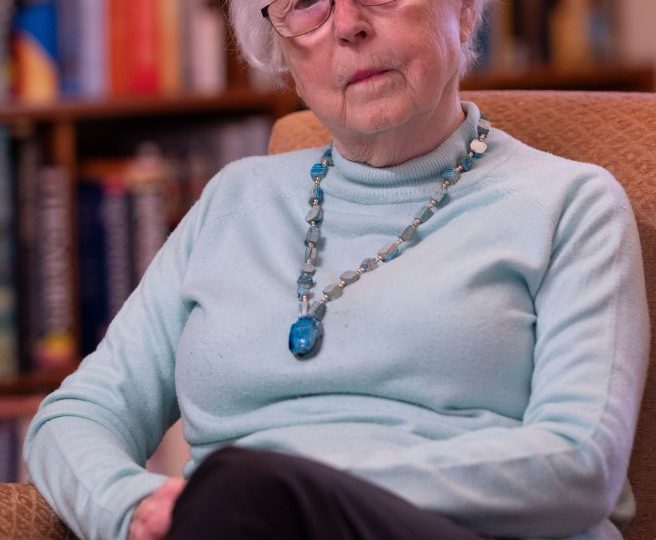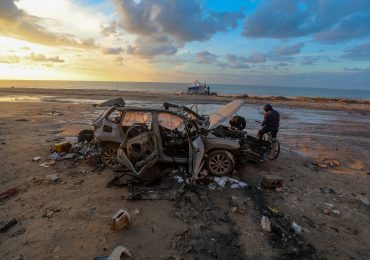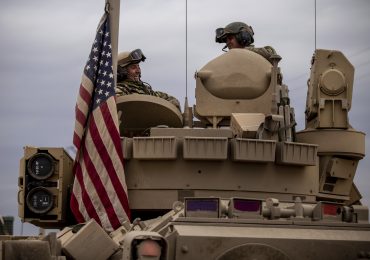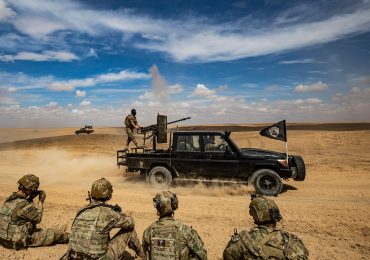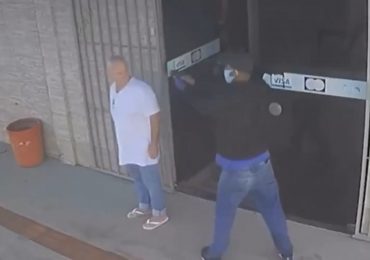A HOLOCAUST survivor has revealed she was minutes away from being sent to her death at Auschwitz – before her train was diverted in a lucky twist of fate.
Agnes Kaposi, 92, was just 11 years old when she and her family were shoved into a cramped and dark cattle wagon with 86 other petrified Jews – the padlocked door slamming shut behind them.
Agnes Kaposi, 92, told The Sun that she was just 12 miles away from Auschwitz when her train was diverted in a lucky twist of fateDarren Fletcher
Agnes pictured in Budapest in 1939 in a photo taken by her uncleDarren Fletcher
Hungarian Jews, wearing the Jewish star of David, arrive at Auschwitz in Poland in the summer of 1944Alamy
The little girl didn’t realise that their train was trundling across the Hungarian countryside towards Auschwitz where they were to be executed in gas chambers with half a million others.
And she wouldn’t know until years later that she was on the only train in history to be diverted away from the concentration camp at the last minute in a move that would end up saving her life.
Agnes, speaking from her North London home, told The Sun: “Historians tell me that there was a single train – mine – that was diverted from Auschwitz.”
As the world marks Holocaust Memorial Day on Monday, Agnes said if it wasn’t for that “quirk of history” she wouldn’t be here today and her children and grandchildren wouldn’t exist.
It was on this train – over a gruelling five days and nights – that Agnes witnessed horrors that she’ll never forget.
Agnes recalls the 87 of them cramped tightly together with no room to lay down and only a small A4-sized window with metal bars across it and a small gap in the gateway for light.
They had no food or water with them and were trying to stick their hand out of the window to collect the condensation from the steam engine in a small cup.
Agnes remembers being a terrified little girl, watching two people die in front of her and some of those around her slowly turning mad.
Agnes, who works with the Holocaust Educational Trust, said: “People die of dehydration before they die of starvation.
“There were also some who were raving mad. They were screaming and shouting, they were tearing their hair out.
“A few tried to attack people in the cart and had to be restrained.
“And these would be perfectly ordinary, normal people when we started the journey.”
She still remembers the oil drum in the corner of the wagon, which they were forced to use as a toilet.
Agnes, her voice quiet, said: “There was an oil drum stood on its end with one end cut off and that was the toilet.
“And well, when the drum was getting full, my grandmother found a ladle in her luggage,” Agnes added, her voice growing quiet as she remembered how they would have to scoop the excrement through the tiny gap.
She said as the train moved, they felt a sense of relief because it meant they were going further away from the Hungarian gendarmerie who had made their lives a living hell for years.
Agnes and her family didn’t realise that they were in fact heading for Auschwitz – or that when they were just 12 miles away their train was diverted.
She said: “At one point, we stopped and we stayed for a long time and then I could sense that I was going in the direction of travel.
“If you shut your eyes on the tube you can sense whether you’re travelling one way or the other.
“And that’s when I realised that our train had changed direction.”
Agnes only found out years later that her cattle wagon had been bound for Auschwitz – or that it was the only train to be diverted.
The grandmother said: “A historian told me that it was a quirk of history.
“Well, I am here today because of a quirk of history – my family as well.
“I wouldn’t be here to tell you this story had the train finished that 12-mile journey.”
Agnes KaposiAgnes was just 11 years old when she was crammed into a cattle cart bound for Auschwitz[/caption]
Agnes pictured with her parents in 1943Darren Fletcher
Darren FletcherAgnes (centre bottom) is pictured with her aunt Terka (far left), grandmother Nanoka (second left), mother Magda (second right), aunt Pici (far right), father Imre (top right) and uncle Feri (top left)[/caption]
Agnes Kaposi told The Sun how Russian troops raped some starving women as they liberated her camp in AustriaAgnes Kaposi
Agnes was shoved into a dark cattle wagon with 86 other petrified JewsDarren Fletcher
AlamyWomen and children are seen after the British liberation of the Bergen-Belsen concentration camp on 15 April 1945[/caption]
An estimated 1.3 million people were deported to Auschwitz concentration camp – 1.1 million of whom were murdered in the gas chambers.
Over Hitler’s brutal reign, six million Jews were killed.
Her diverted train ended up at Strasshof transit camp near Vienna and from there Jews were taken to work as a slave labourer across Austria‘s farms and factories.
Agnes lied about her age – saying that she was 14 years old – so that she’d be able to work.
If they found out that she was 11 years old they wouldn’t have allowed her to – and food was only given to workers.
In the nine months that followed, Agnes was a slave labourer at a farm and then later a factory manufacturing anti-aircraft guns for the Nazis before returning to Strasshof.
When the transit camp was finally liberated, Agnes finally felt a sense of hope when the Soviet Union’s army arrived to liberate their camp.
But they brought fresh horrors, picking off some of the Jewish women at night to rape them.
Agnes said: “At night, they came. They raided our camps and targeted some women and took them away.
“When they came back, some were bruised, some bloodied – all of them in a terrible state when they stumbled back in at dawn.”
Agnes was only 12 years old at the time and only knew that they had been traumatised – not that they’d been raped.
But they knew they had to flee when the Russians arrived.
And so they started their formidable 160-mile trek through war-torn Austria, Slovakia and Hungary to their home in Budapest.
She said: “It took us a month to get there because there was no public transportation, and we were just about staggering because we were so weak.”
Agnes’ grandmother found hiding places for the four women of their family for fear of them being found by the Russian soldiers.
She said: “The Austrians had fled their villages from the Russian soldiers – and so we went through empty streets with beautiful intact houses.
“But we never slept in the houses because that’s where the Russian soldiers came raiding, looking for women.
“We slept in chicken coops, or pigsties, or inside haystacks to hide from them.”
Agnes and her family finally made it to Budapest on 1 May, 1945, hoping to be reunited with their male relatives.
But they were met with yet more heartbreak.
Agnes found that only one of the men in her family had survived the war and 27 had been killed.
They had been sent to join the Hungarian army, without clothes or weapons, and were thought to have been killed by their fellow countrymen.
Her family also found that their home had been taken away from them and confiscated.
And on their return, Hungarian civilians told them: “Couldn’t you have stayed where you were?
“Hitler should have finished the job instead of you spoiling the air here.”
Agnes was one of the very few who survived Hitler‘s barbaric rule and she later left Stalin’s Hungary to set up a home in London.
She said if her train hadn’t been diverted in that “quirk of history” – she wouldn’t be here, nor her five grandchildren.
Agnes is pictured sitting with her parents in May 1940Darren Fletcher
AlamyOver Hitler’s brutal reign, six million Jews were killed.[/caption]
AlamyJewish prisoners stacked in their bunks at the Buchenwald Concentration Camp after liberation by the US Army 80th Division on April 16, 1945 in Jena, Germany[/caption]
The horrors of Holocaust
ONE of the greatest atrocities in world history, the Holocaust cost the lives of millions of Jews across Europe.
The genocide was carried out largely during World War 2, with the rise of Nazi Germany as victims were persecuted, tortured and killed on an industrial scale.
But not only Jews were targeted under Hitler’s regime – Romanis, homosexuals and Jehovah’s Witnesses were also on Hitler’s list.
It is estimated around 6 million Jews died in the Holocaust.
They were either killed on the spot, drafted to forced labour camps, or sent to concentration camps.
The camps saw millions of innocent men, women and children murdered in gas chambers.
Or they died of starvation or illnesses.
The notorious Auschwitz camp would become the grave of at least 1.1 million people.
The horrors started when Adolf Hitler rose to power in 1933 and passed antisemitic laws in a bid to force German Jews to emigrate.
And things became even more hellish after the occupation of Poland in 1939.
The nightmare came to an end after the UK, US and the rest of the Allies won the war and liberated the survivors from the remaining death camps in 1945.
Senior Nazi members were prosecuted during the Nuremberg trials with the first tribunal trying 23 political and military leaders.
Adolf Hitler, Heinrich Himmler and Joseph Goebbels, were excluded as they had committed suicide several months before.
January 27 marks Holocaust Memorial Day – which is the anniversary of the liberation of Auschwitz.

